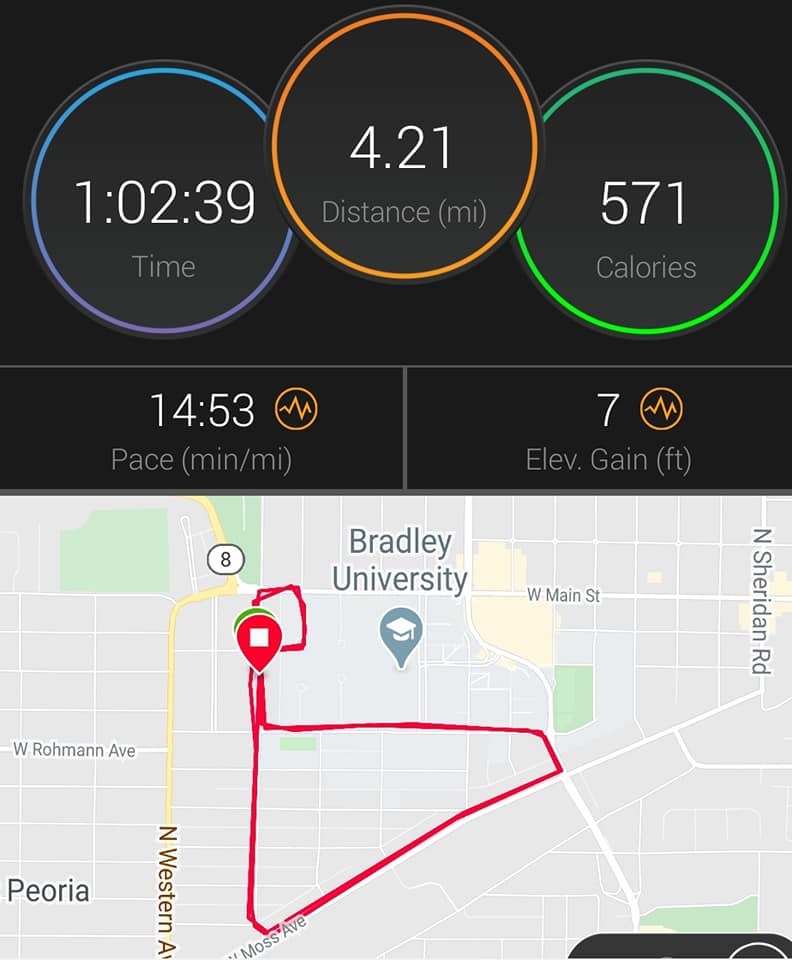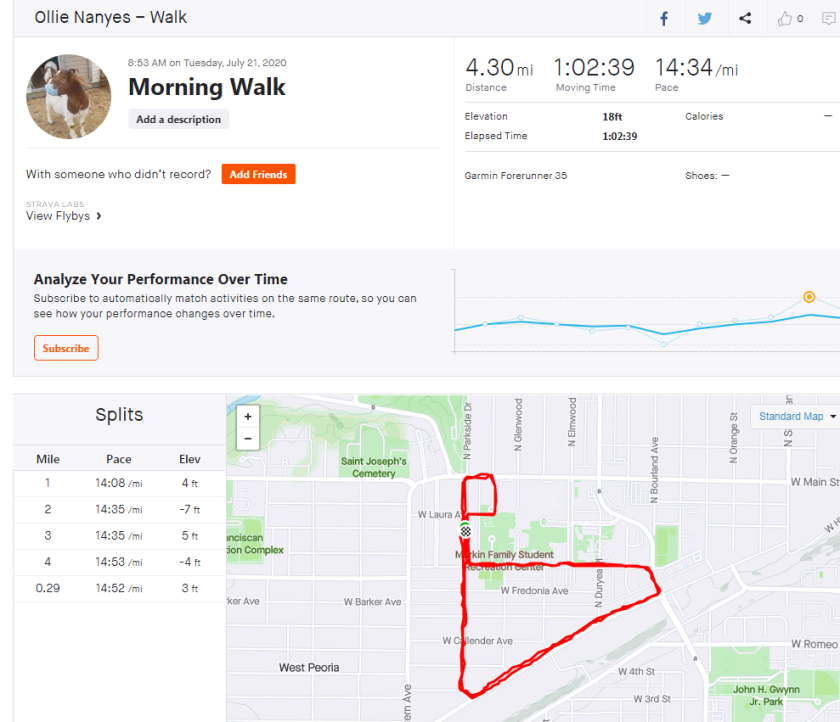My workout, which I was pleased with, is at the end.
But with Garmin being down due to a ransomware attack I got a chance to see what Strava would do with the same data points that Garmin connect uses.

This is the course in question. On Thursday, I did this course 3 times then a bit extra. The Garmin measured it as 6.3 miles and Strava got this at 6.4 with the same data points that the Garmin used.
Here is the Strava output, which includes the extra partial loop.

The time before, Garmin measured these two loops as follows:

Strava gave me 4.3 on the same data:

Now look at today’s walk, where the Garmin and Strava got the same mileage with the same data points:

6.22 (which is what the Garmin showed).
So, why the difference?
(yes, this is based on only a few outputs)
First note that there was a time when the outputs were all but identical. That tells me it is NOT “round off” error (e. g. one program carrying more digits than another).
But note when I had a different number: the lines are all “wiggly.” Reason: the two that were different were weekday morning walks; there was much more traffic. I made course corrections to avoid other runners, pedestrians and vehicles on the road.
Today’s trek was on a less crowded day: note the lack of “wiggles” in my path.
My inference: the difference is in how the algorithm connects the dots. First of all, each “dot” is really just an intersection of lines from different satellite signals and those lines of intersection form a polygon rather than an exact point.

The centers of these “polygons” formed by the signal lines determine your position points. So, what to do with these position points?
The crudest way is to draw a straight line path between these points (black). One can select the points in batches and fit different sorts of curves by either a spline or by a least squares principle. 
Here, I approximated paths by cubic splines between each group of 3 points and one that uses all 5 points (but doesn’t quite cut through all of them.)
But one gets different distances when one uses a different “curve fitting” algorithm, and it is my guess that Strava algorithm fits curves through more of the points than the Garmin algorithm. And the difference is less when the curve has less “wiggle” to it (in math terms: smaller magnitudes for the second derivative).

Anyway, that is my guess.
My workout: I warmed up my glutes and back..(15 minutes)
Deadlifts (low handles, trap bar): 10 x 134, 10 x 184, 5 x 228, 3 x 250, 5 x 233 NO BOUNCED REPS. Note: this might not seem like much but at this time last year, I couldn’t get 225 for a single rep.
Then the walk:

It was 81 F at the start, 84 F at the end, 69 percent humidity. That is warm for us.
No glute pain. Not much knee pain either.






















































































































































































































































